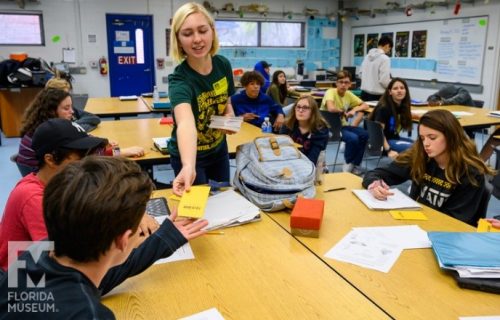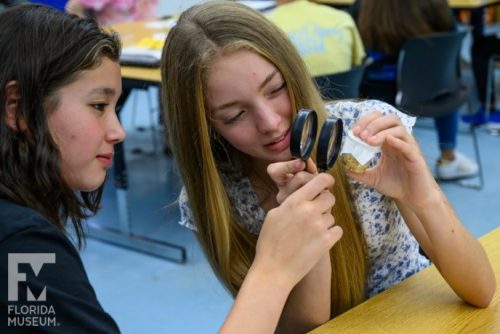Insects and their frass, or poop, are more important than you may think! The Frass in the Class project aims to spark students’ scientific intrigue through a close examination of each stage of a butterfly’s life cycle. The project provides all materials and knowledge needed to rear painted lady butterflies (Vanessa cardui) from caterpillar to adult. Frass in the Class encourages students to think about why insects have certain attributes and behave in distinct ways.
Sponsored by Thompson Earth Systems Institute (TESI), Frass in the Class facilitates direct engagement between students and scientists alongside the TESI’s Scientist in Every Florida School initiative (SEFS). SEFS allows teachers in pilot counties to request a scientist to visit their classes and speak about their research as well as engage with the class in hands-on learning opportunities. Fostering connections between students, teachers and scientists is integral to imagining a future filled with investigation, innovation, and collaboration.
When Kawahara lab members Amanda Markee, Emily Hernandez, and Becky Messcher, visited Holly Brennan’s fifth-grade classroom on Feb. 7, 2020, they sought to form these connections and encourage Florida students to be stewards of the planet, or at least of the insects in their backyards. Students were introduced to scientific observation and how they can use these techniques to learn more about their caterpillars. The group also engaged the students in a conversation about insect classification, insect adaptations and the importance of insects in the ecosystem.
Many students were surprised to learn about the many uses of frass, including its important role in species identification for scientists and predator evasion for insects. Some insect larvae build protective structures with their own poop while others have evolved to look like the poop of other organisms. 
The conversation took many exciting turns as the students posed excellent questions such as “how do butterflies use their wings to fly?” and “how do their wings form during metamorphosis?”. Research assistant Emily Hernandez noted that the students were “intuitively able to relate many aspects of butterfly adaptations to their own lives”. After learning about butterfly feeding behavior, students compared host plants to their own favorite foods as one student excitedly noted his favorite food is fried rice.